#70's reggae
Explore tagged Tumblr posts
Text
(1978) The Police - Hole in My Life
Live in Hamburg 1980
#the police#sting#andy summers#stewart copeland#hole in my life#music#tumblr#video#song#live#album#rock#discover#1978#1980#70s#70’s#70s rock#70s music#reggae
17 notes
·
View notes
Text

It's Only Rock 'n' Roll by The Rolling Stones Rolling Stones 1974 Rock & Roll / Hard Rock / Blues-Rock / Funk-Rock / Reggae-Rock / Pop-Rock
#rock & roll#rock and roll#rock#hard rock#blues rock#funk rock#funk#reggae rock#reggae#pop rock#pop#classic rock#classic pop#music#70s#70s music#70's#70's music
12 notes
·
View notes
Text
youtube
The truth about the weird musicians might be that each of them has his or her own self-awareness about their very own positions and some actually used this to their own benefits. Serge Gainsbourg, for instance, continues to be seen as a weird one who had a plan. To be honest, the latter's major blueprint was a provocation, which, if you ask me, diluted the fact Gainsbourg was one of the most intriguing Western pop musicians. For instance, Aux Armes Et Cætera found him tackling reggae. However, we cannot accuse him of making a cod version of the style, he actually went to Jamaica and asked the most prominent players of the genre to collaborate with him. While this could be a recipe for a disaster, the whole thing just works so well you can only nod.
#Youtube#serge gainsbourg#aux armes et cætera#lola rastaquouère#the i threes#robbie shakespeare#lowell 'sly' dunbar#michael 'mao' chung#radcliffe 'dougie' bryan#ansel collins#isiah 'sticky' thompson#robbie 'tights' lyn#marcia griffiths#rita marley#judy mowatt#philippe lerichomme#70's music#reggae
2 notes
·
View notes
Text
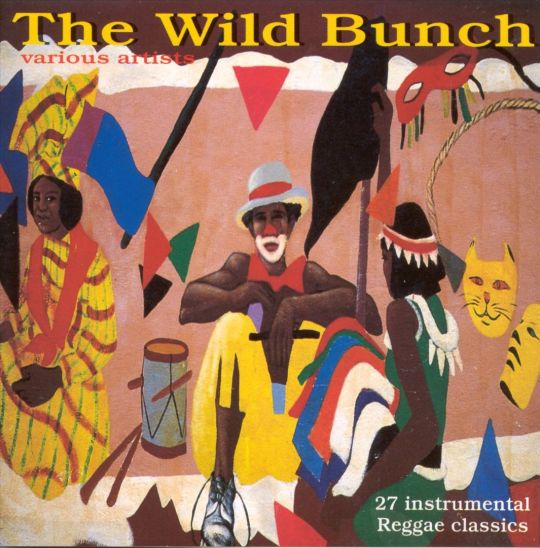

Today's compilation:
The Wild Bunch 1995 Reggae / Roots Reggae / Rocksteady / Dub
First off, let me just say that I am in total awe of this crop of reggae instrumentals from the 60s and 70s here. So much music since has come with so much more fuss and technological advancements, and yet an unscalable pile of the stuff that came out after this doesn't seem to come close to how good a bunch of these simple tunes still are. In a broad sense, all these songs' formulas are pretty simple, but they really still just manage to click so damn well 😌.
From this comp's liner notes:
During the past eight years, Trojan have pioneered the 'Revival' Reggae scene. Our re-issue programme has preserved some of the best vocals ever recorded in Jamaica, but with the emphasis being placed on some of the island's many talented singers in recent years, the musicians have tended to be ignored. This current release reverses that trend by turning the spotlight onto the 'players of instruments', and in so doing we pay tribute to Kingston's legendary session men.
Now, because nearly all of these are straight-up instrumentals, they all pretty much operate in the same way, and each of them seem to have one thing in common that ends up either making or breaking the tune: the lead instrument. Because reggae riddims are inherently repetitive and steady, if left alone, they will naturally get stale. So, it takes a good melody of some kind to be laid atop that riddim in order to lend the song some much needed variety. And in a whole lot of these 27 tunes, that ends up coming to remarkable fruition.
It's hard to even really know where to begin with this album since there's so much goodness to be found within it, but the thick, whistle-ringing improvisational organ of Lloyd Charmer's "Ling Tong Ting" is an absolutely terrific place to start. Then the JJ All Stars get topsy-turvy with the audio channels on "Memphis Underground," by sending the melodic leads exclusively and *very prominently* through the left, and 90% of the riddim through the right; Herman Marquis' "Tom's Version," whose intro I'm pretty sure I've heard sampled in at least one hip hop tune before (Wu-Tang, maybe? It's honestly driving me crazy that I can't put my finger on it), then follows by doing a wonderful job of harmonizing its organ and trumpet, yielding this fully warm and satisfying haze; the legendary Augustus Pablo, who singlehandedly managed to transform the melodica from a mere plaything for children into an instrument with serious gravitas, shows why on a rootsy piece of dub called "Great Pablo;" and then towards the end, we get a bit of a surprise with a piece of gospel-reggae that's actually not an instrumental: the Harry J All Stars "Holy Moses," which is aided by a small set of female singers whose deployment of soul harmonies reminds of the backup singing that can be found on a bunch of Bob Marley hits.
But the closing title tune by the Music Doctors may be both the most remarkable and most fun track of them all, for the simple fact that it uniquely trades its leads between—not things like guitars, horns, and organs—but just bass and drums. And the bassist just seems to carefreely play this laid-back and very recognizable piece of melody from The Jackson 5's "I Want You Back;" it's so good!
So, a phenomenal collection of rare Jamaican reggae instrumental classics here, from the genre's premier label itself, Trojan. Yesterday, I posted about an excellent metal cassette from 1985 that's also called The Wild Bunch, and given how good that that album was, I really didn't think that this one could outdo it, but it very much did!
Highlights:
Selwyn Baptiste - "Mo' Bay" Boris Gardiner - "Memories of Love" The Dynamites - "Phantom" Sound Dimension - "Soul Food" Lloyd Charmers - "Ling Tong Ting" The Aggrovators - "The Sniper" JJ All Stars - "Memphis Underground" Lynn Taitt & The Jets - "Love Me Forever" Herman Marquis - "Tom's Version" The Tennors - "Copy Me Donkey" Winston Wright - "Heads or Tails" Augustus Pablo - "Great Pablo" Harry J All Stars - "Holy Moses" Music Doctors - "Wild Bunch"
7 notes
·
View notes
Text
youtube
I don't think this is Experience 7, but it stumps all the music apps, no idea what it is but it's a banger!
1 note
·
View note
Text
I did some research on Bauhuas for a history of rock course. The information might not be 100% accurate but I’m kinda proud of how it came out. The performance I mentioned is the 2005 Coachella Performance.
In the 70s there was a specific subset of people, known as “bat cavers”. These people would dress up in messy hair known as the “bats nest” and wear black clothes with black on white makeup. These people were also seemingly obsessed with morbid and spooky topics. Today people like this are known as “goths” and the popularity of this subculture can be attributed to the release of 1979’s “Bela Lugosi’s Dead” by post punk band, Bauhaus.
At the time of release post punk wasn’t related to goth people so much as it is today, so one can imagine the public’s shock after hearing this eerie 10 minute track about a dead actor. What made this song so special was the eerie tone of the guitar, strong drum backbeat, distortion, and the morbid theme of the lyrics. This song can be loosely placed into multiple genres, the most striking of these being the reggae genre. When compared to genres surrounding reggae, like 2-tone ska, it becomes more apparent.
This cemented what the post-punk genre would become over the next 40 years. Post release, the song was described as “gothic”, thus sparking the new genre and subset of music culture.
“Bela Lugosi’s Dead”, on the surface, is a ten minute song about a dead actor, specifically, the actor that played Count Dracula in the 1931 film “Dracula”. However, there are multiple ways to look at the lyrics. The most prominent being the description of Bela Lugosi’s burial. Apart from the repeated “Bela Lugosi’s Dead”, there are three lines that outline this exactly. The first line is “the victims have been bled.” This can be seen as the preparation for the burial where the embalmer rids the body of fluids and unnecessary items. “Red velvet lines the black box” is a reference to how Bela’s coffin was lined with red velvet. “The virginal brides file past his tomb” is his visitors walking by his tomb.
However, if you know about goth culture and its origins, there is another meaning to these lyrics. “White on white translucent black capes, back on the rack” can be seen as the commercialization of this sub-culture of people, the same can be said for the line “the victims have been bled” where the victims are the bat cavers who’ve been bled of their culture. “The bats have left the bell tower” is referring to the closing of the old goth club “The Bell Tower” in London and also about the term “bat cavers” “leaving”, or being replaced by the term “goth”.
The performance that I have linked took place at Coachella in 2005. Bauhaus was on stage, shrouded in darkness, and started with the simple drum backbeat. The entire band is dressed in gothic black clothes and the stage is barely lit once the lights come on, adding to the eerienes of the band and its music. The lights come on at the first beat of the drum to reveal Peter Murphy, the vocalist, hanging upside down as if he was a bat. Right off the bat this performance is very gothically inspired. Everyone in the crowd is excited and screaming. At one point the bassist crosses his arms over his chest as if he was Dracula rising out of his coffin. Bauhaus is an excellent example of a post punk band that really took on the gothic themes of the genre.
Thanks for reading! 🖤
#goth aesthetic#bauhuas#bela lugosi#dracula#post punk#reggae#peter murphy#bat cat#bell tower#bela lugosi’s dead#goth#vampire aesthetic#goth music#gothgoth#trad goth#80s goth
69 notes
·
View notes
Text
Album review: Gwen Stefani - Bouquet
Fans have been begging for a new Gwen Stefani album, and lo and behold us, we can finally say we have one. Bouquet, the singer’s first proper studio album in eight years (seven if you include her Christmas album, You Make It Feel Like Christmas) arrives after a few false starts. After initially teasing what many assumed was going to be a reggae-pop album in homage to her early No Doubt career, Stefani got married to country-singing husband Blake Shelton and felt inspired to pivot in another direction. Taking a more ‘70s, yacht rock approach with hints of country, Stefani takes influence from the music from her childhood while documenting where she’s at in her life right now.
Kicking things off with the anthemic pop-rock single “Somebody Else’s,” Stefani makes it clear that she’s never looking back again after realising she deserved better during a previous relationship. “I don’t know what a heart like mine / Was doin’ in a love like that” she opens the song. Continuing to recognise her self-worth, Stefani sings, “If I could go back in time / I would erase you, ooh / But I could never go back there / I might be wild, but I ain’t that crazy,” in the second verse.
With her ex-lover out the way, the majority of Bouquet hears Stefani gushing about one thing and one thing only: her relationship with Shelton. Telling the story of how the pair blossomed and fell in love, the wholesome title track stands out as one of the album’s key moments. Boasting Shelton’s ability to make her feel as if she’s the most beautiful woman in the world, Stefani has never been happier on sweet ballad “Pretty,” while on the uptempo “Late To Bloom,” she proclaims that “good things come to those who wait” after having to hang on until she was well into her 40s to meet the man of her dreams.
For an album that could alienate a lot of long-time listeners of Stefani, she appears slightly more on brand for the record’s latest single “Swallow My Tears.” The Queen of Emotive Songwriting, fans might argue that the song feels like an accidental ode to some of Stefani’s previous heartfelt material. The same could be said for another standout, “All Your Fault,” which features an irresistible chorus that wouldn’t sound out of place on 2016’s This Is What The Truth Feels Like. Rounding off the release with her duet with Shelton, “Purple Irises,” the choice feels rather fitting. After all, the evident case is that this album wouldn’t exist without his influence.
Just like a bouquet of flowers, Gwen Stefani’s most recent offering, Bouquet, is a pretty album packaged with 10 tracks. Is it her most exciting? No. Does it further demonstrate her ability to be a musical chameleon and a top songwriter, however? Yes. Do we secretly deserve the album she intended to release a few years back? Most definitely.
10 notes
·
View notes
Text
i know i’m far from an expert on history but it always bothers me to see bob marley’s portrait hanging in my local weed shop. like, i’ve loved reggae music since i was young, well before i ever smoked weed, i know listening to music is pretty rad when stoned, and i admit i understand that a lot of prominent figures and concepts idolized by the hippies and revolutionaries of the 60’s and 70’s in the usa eventually became synonymous with drug use, esp marijuana, due to smear campaigns against counterculture so maybe it is a kind of defiance to display it proudly? but while i understand the admiration a lot of disillusioned young people in the usa in the 60’s and 70’s would have felt for the people fighting the class war in jamaica and the reggae music emerging with lyrics about said war but still pushing for peace, for one love, as they worked to topple inequity and corrupt systems while redefining perspectives on race, oppression and intergenerational trauma but how did bob marley become “the weed man” in the cultural consciousness when he was a spokesperson for political change and class revolution? is it only that way in the us? do other countries and cultures see him as more than a stoner icon with his face on rasta memorabilia sold at jacked up prices to college kids who have never even heard of the rastafari revolution, the pan-african movement or the jamaican civil war, idk why but it really does bother me to see a strong voice for peace and change reduced to a face plastered on drug paraphernalia and stoner t-shirts. like… damn. that’s the death of a revolutionary in the capitalist tradition, i suppose. bob marley’s portrait hanging above the bud hut cash register, “grunge” clothing sold by fast fashion corporate hellholes, t-shirts with kurt cobain’s suicide note written on them being sold for 800 bucks a pop, eat the rich stickers for sale on amazon of all places, santa muerte being sold as a goth accessory or a “hardcore” generic tattoo in the us stripped of what she symbolizes to me and many other latina/o people who were raised with mexican neopaganism and folk catholic traditions, sanitized street art commissioned by some silicon valley suit that is purely aesthetics with no heart, no soul, nothing related to the authenticity of artistic vandalism, just imaginary street cred points for a rich dick. i get the same feeling in my stomach seeing the “aesthetic” whitewash of counterculture, the clownery of “alt” culture on apps like tiktok, the cashing in on the suffering of the oppressed for a quick buck and the tragic victory of cementing hippies and beatniks and freedom fighters in the minds of the following generations as degenerate druggies (thanks nixon and crew) that i get when i hear that pop remix of “the hanging tree” and it’s a lot to take in while i’m just trying to buy a box of strawberry cough prerolls.
#bob marley#hippies#revolution#counterculture#weed#1960s#1970s#grunge#reggae#jamaican civil war#colonizers#fuck capitalism#eat the rich#tiktok#stoners#rambling#rant#cultural commentary#political commentary#history#politics#class war#rastafari revolution
25 notes
·
View notes
Photo

Punk Rock Utd: an all-star team of various musicians of the late-’70s London rock scene playing charity football matches in 1979 against Shoot! Magazine and a TV sporting celebrities team and ending up playing at Stamford Bridge Chelsea FC ground, as captured by Bob Legon for Smash Hits.
L-R, back row: Bill Stewart (Island Record’s talent spotter), Gen X’s Billy Idol, Robert (4″Be2″s roadie), Sex Pistol’s Paul Cook & Gen X’s Tony James.
front row: Mike James (Tony’s brother), 4″Be2″s /John Lydon’s younger brother Jimmy, Sex Pistol Steve Jones, 4″Be2″s Paul Young, Gerry O’Donnell (loan from Celtic), the Skids’ Richard Jobson & Thin Lizzy’s Phil Lynott on the far right playing “spot the ball”, to quote the original caption.
London promoter, DJ, manager & member of 4" Be 2" & The Bollocks Brothers Jock McDonald along with Faebhean Kwest of Cuddly Toys & Raped organized the event and Killing Joke’s Youth, one-hit reggae wonder Dan-I and some more presumably took part as well, while the part of the hooligan crowd was performed by The Upstarts’ Tomy Mensi.
(via, via, via, via, via, via, via)
#punk rock#early punk scene#1979#punk#steve jones#paul cook#sex pistols#4Be2s#generation x#billy idol#tony james#the skids#richard jobson#thin lizzy phil lynott#people#football
79 notes
·
View notes
Text
Dollar Bin #24: The Doors

Like every other wishing-he-were-cool Southern California white boy born in the mid-to-late 70's, I had a big Doors phase in 1990. In the year leading up to Oliver Stone's ridiculously silly, TV flinging, film I spent 10 rich months in the following fashion:
First, I copied a friend's father's double CD Door's Greatest Hits collection (the one with Jim Morrison's fabulous pecks on the cover). I was discovering music after comic books and I memorized every glorious moment.
Next, I tracked down the band's four easily accessible full albums via another friend's Costco (or was it still called Price Club at that point?) Nice Price 4 Pack and memorized all of that too, even though I found parts of Waiting For The Sun dull and much of LA Woman sorta gross.
Then, I decided that Not To Touch The Earth was actually their best song and that anyone who only knew the band's greatest hits was a poser.
Next, I enjoyed listening to my father's tall tales about how The Doors had once lived on the strand in Manhattan Beach (my hometown) and were often practicing in their garage when my dad passed by. He also claimed that Morrison had worked for him for one single day as a house painter (my father's trade) but that Jim had been too nuts to keep on the payroll. At other points in my dad's joyful imagination Charles Manson and Ginger Baker had also been on past crews; his lies, which were specifically designed to entertain us, led us to mock and roll our eyes at him when he sincerely claimed that one of his past painters, Robbie Rodgers, actually had gone on to be a relatively successful musician. But then dad scored us tickets and we went to see the dude's Reggae/slasher band, War Called Peace, open for Yellowman; it was totally nuts, and Robbie told us that my dad had changed his life.
After that, I learned of the existence of The Soft Parade and swore to myself that I'd never listen to it. My heroes, horrifyingly, had once SOLD OUT!
Next, I watched Apocalypse Now over and over, daydreaming of the day I'd get my own hands on The End's master tapes and undercover even more of Morrison's Oedipal ranting.
(All the while I had no idea what Oedipal actually meant.)
Throughout it all, I feverishly followed Robert Hilburn's updates in the LA Times on the back and forth on set about whether or not Val Kilmore would sing or lip sync in the upcoming film.
Shortly thereafter, I shook my fist in fury when Billy Idol dared to cover LA Woman. The poser!
That drove me to the library, where I got Riders on the Storm, Jim Densmore's Morrison bio. I read it feverishly, taking mental notes on how I too would one day successfully avoid the draft by demonstrating Morrison-level savvy madness.
Midway through Densmore's self-aggrandizing tome, I bought a copy of Wilderness, Morrison's slim and posthumous published poetry collection, and carried it around with me together with my copy of the Tao Te Ching, convinced that they were the two true holy books. Anyone who thought otherwise I recognized as a poser.
All the while, I spent a lot of time thinking about how Ray Manzarek doubled as the band's bass player and pianist all at the same time on one keyboard. I viewed him as Einstein with a chainsaw.
Somewhere along the way, I sought out an ancient tape copy of a disco sounding album the band made after Jim's death and noted that no one in the band had made meaningful music ever since. And so I grew slightly concerned that maybe my heroes were secretly lame.
But I still stood in line for opening night of the film and smugly mocked everyone else in line with me as a poser. Clearly, none of them knew the secret lyric, edited out, after She Gets! on Break on Through...
And I thought the movie was pretty cool!
Then I proceeded to grow sick of the whole thing - the band and everything about them was suddenly far too mainstream for my superior tastes - and I decided anyone who liked The Doors on any level was a poser. Lou Reed and Bob Dylan were all that mattered.
Then a cool older kid played me Peace Frog and I realized I'd missed a whole album (damn Costco!). So I decided The Doors were cool again for about 15 minutes.
Then, 10 months after the whole thing had started, I moved on for good.
But that's not entirely true. Years and year later, I sang my kids to sleep with The Spy and The Crystal Ship; and I can still can almost recite Morrison's poem about some dude burning leaves. Now that I summon it from the internet and read it again I still think it's pretty great:
A man rakes leaves into
a heap in his yard, a pile,
& leans on his rake &
burns them utterly.
The fragrance fills the forest
children pause & heed the
smell, which will become
nostalgia in several years
But now, I have to ask, how does one even go about listening to The Doors with any objectivity 33 years after they became the world's biggest band for a moment and 50 years after Morrison's death? I mean there's a 15 year old hipster in the high school where I teach who still wears a t-shirt with Morrison on it. I don't know if objectivity can be achieved.
But I'm giving it a shot right now as I write this.
My copy of their debut, self-titled, album is an original print supposedly, and the vinyl sure sounds like it's creeping up on its 60th birthday. Crackling thunder, seemingly borrowed from Riders on the Storm, buzzels and pops throughout. But the whole record sounds great that way, like it too was taken from the Ancient Gallery and WALKED ON DOWN THE HALL!
Fair reader, here's what I think: if I try hard and strip back all the nonsense I know about poor Jim and the band, then I'm left with what is elemental music.
Sure there's some silly stuff to be found: Morrison's lyric "specialize in having fun" from Take It As It Comes is, and always has been, embarrassing, along with basically all the lyrics to Light My Fire. And I don't really know that the organ's drunk circus vibe in Alabama Song holds up.
But listen to Manzarek spill every coin in the band's copious wallet on Take It As It Comes; remember just how cool the wandering guitar intro still is on The End, not to mention the slapping, rippling, pick me up 3/4 of the way through that wandering track; appreciate just how unhinged Morrison's screaming holler is on Back Door Man; ride on the perfect Crystal Ship. And for god's sake, just sit back and listen to Light My Fire.
youtube
What if we simply thought of The Doors alongside their actual peers from 66-71: Love, Buffalo Springfield, Jefferson Airplane, The Grateful Dead? What if we slowed down and remembered that the band did everything they did in under 5 years? What if we remembered, at the same time, just how much Stephen Stills still sucks? And what if we set aside for good just how damn magnetic poor Jim was? What if we just listened to The Doors?
I encourage you to give it a shot. Drop the needle on The Doors debut once a season; ride the King's Highway west; catch all the weird scenes in the goldmine. You too will wish The Doors practiced in a garage down your street.
-------------
Update! After posting this, my famous brother sent me this photo of Morrison. He's actually in Manhattan Beach!
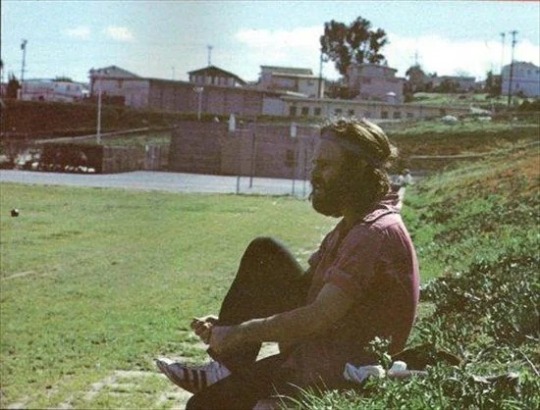
I think my father, who, come to think of it, looked a hell of a lot like Morrison at that point, is just outside the frame, striding away after firing his ass. Rest in peace Jim.
13 notes
·
View notes
Note
Gwen said in an interview last year that she already knew what the next album she wanted to do was. Do you think she meant this 70’s themed album? At the time we thought the reggae stuff she wrote in quarantine was still in the works. Or do you think she has yet another project in the back of her mind? It would be nice if she did a folk/Americana album one day for her parents since they love it and tried to be a folk duo back in the day.
She can do any genre. So few artists can say that, but she can.
- B
7 notes
·
View notes
Text
🦋 𝙏𝙝𝙚𝙢𝙚𝙨 𝙁𝙧𝙤𝙢 𝘼 𝙎𝙪𝙢𝙢𝙚𝙧 𝙋𝙡𝙖𝙘𝙚 𝙫𝙤𝙡.3 A very late (and a very personal) summer selection full of 70/80’s groovy sounds … from Italian movie soundtracks to obscure Disco anthems mixed up with Tropical gems from Guadeloupe, Antilles, Cabo Verde, some weird french covers, a lebanese reggae song and other « interesting » less known music from all over the world ! + of course … the usual melting pot of stupid movie dialogs , crazy interviews, phone pranks and bad jokes. Listen to vol.1 : Djnobreakfast – Themes-from-a-summer-place Listen to vol.2 : Djnobreakfast – Themes-from-a-summer-place-vol2 Listen to vol.3 : Djnobreakfast - Themes-from-a-summer-place-vol3 📡 Thanks to all the radio stations : Radio Alhara راديو الحارة 🇵🇸 Bethlehem Campus FM 🇫🇷 Toulouse Pigalle Paris Radio 🇫🇷 Paris Internet Public Radio 🇲🇽 Guadalajara Zanj Radio 🇯🇲 Kingston Radio Karantina راديو كرنتينا 🇱🇧 Beirut
#djnobreakfast#dj no breakfast#summer mixtape#summer#summer vibes#disco#tropical#zouk#mixtape#SoundCloud
3 notes
·
View notes
Text
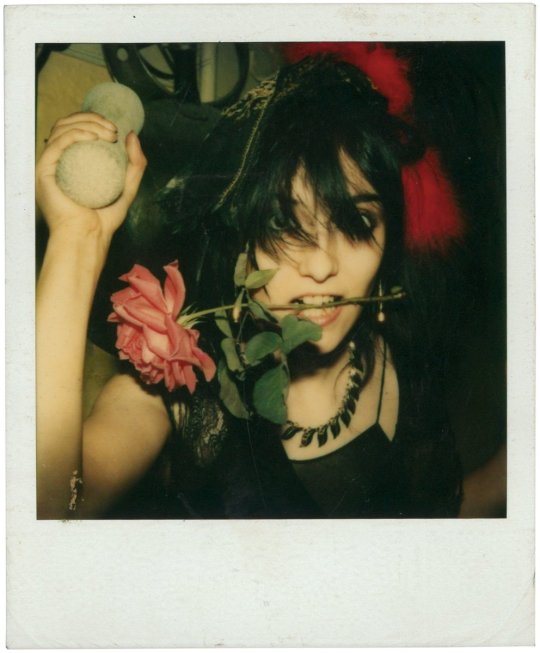
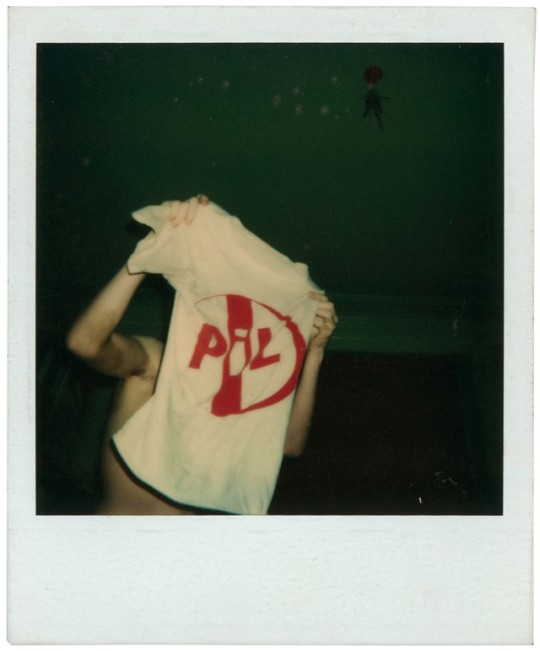
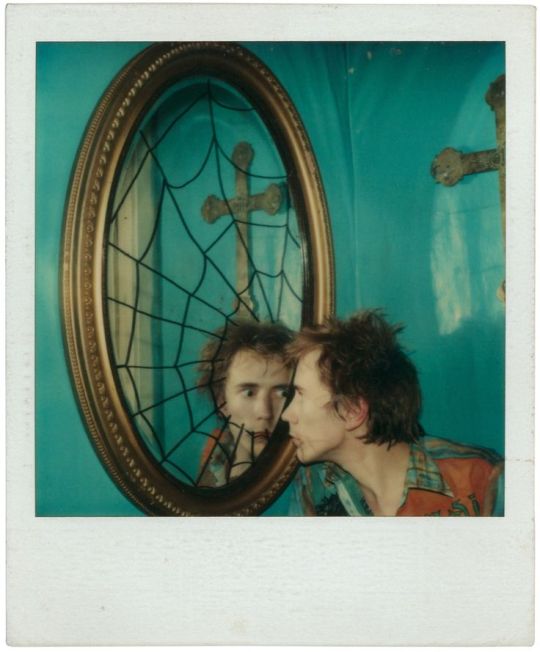
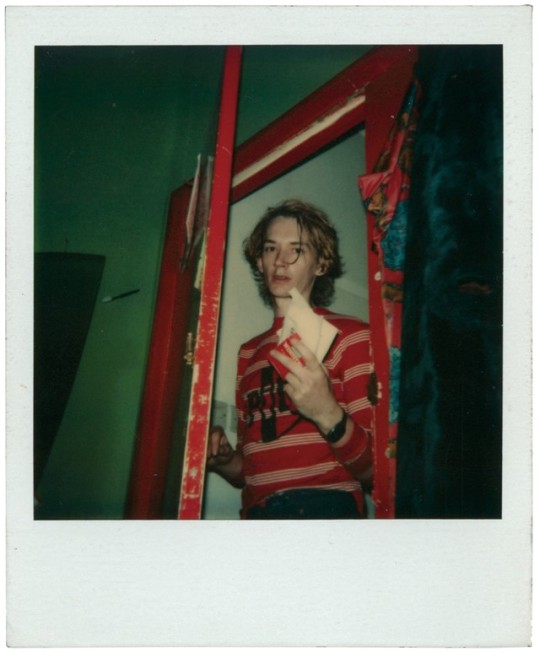

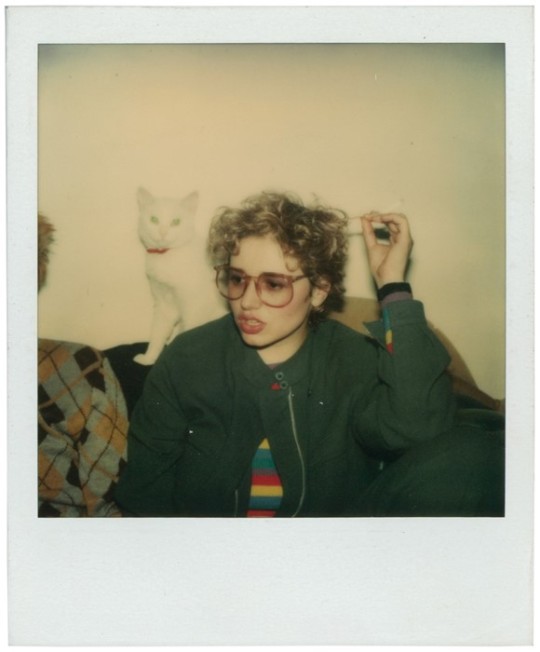
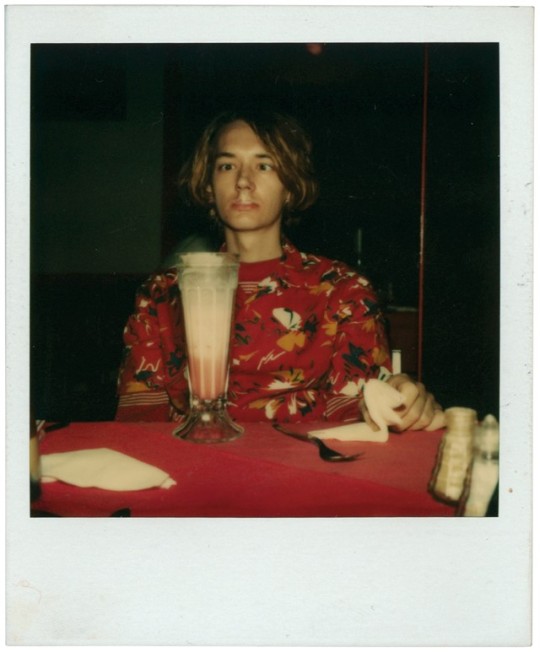
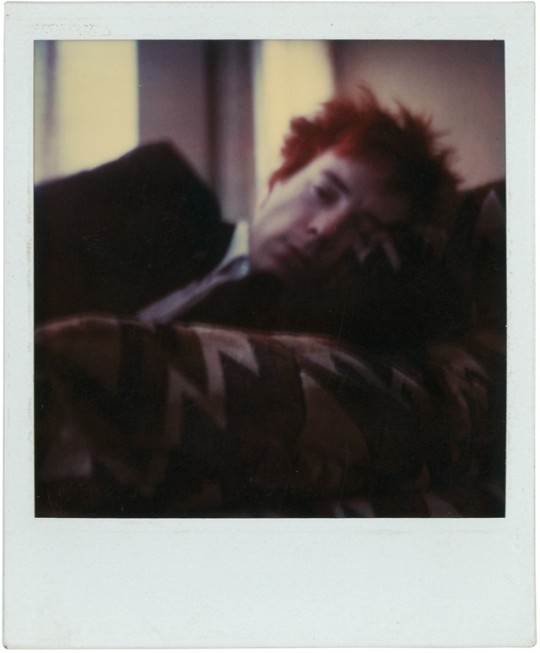


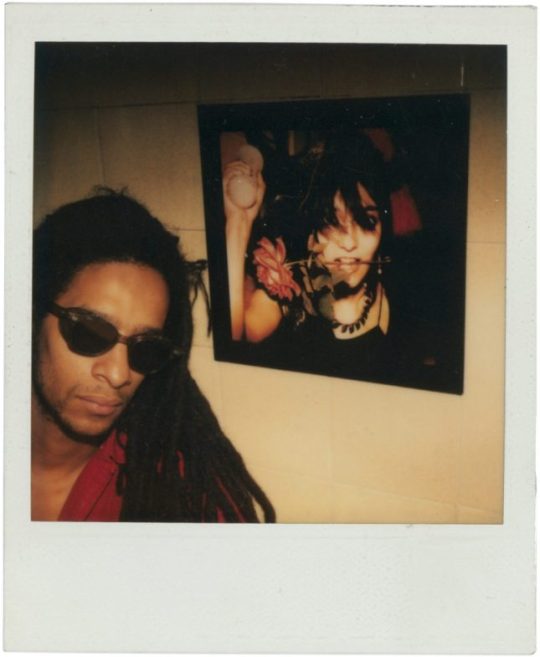

"THE QUALITY OF THE PICTURES WAS SO GOOD. I HAD A STINT OF HAVING IT WITH ME ALL THE TIME."
PIC(S) INFO: Mega-spotlight on behind-the-scenes Polaroids of English post-rock/post-punk/experimental music group PUBLIC IMAGE LIMITED, c. 1980-'81. 📸: Jeannette Lee.
OVERVIEW: "In late 1978, one year after the tumultuous break up of the SEX PISTOLS, John Lydon (a.k.a. Johnny Rotten) launched his new band, PUBLIC IMAGE LIMITED, featuring his childhood friend Jah Wobble on bass, and Keith Levene, former guitarist for THE CLASH, on guitar. Lydon had had a rough time of it; by the time the Sex Pistols disintegrated, he had no money, no privacy thanks to the band’s enduring notoriety and no real control over his punk past (former manager Malcolm McLaren had staked claim to the SEX PISTOLS’ image, forbidding Lydon to use the name Rotten for future endeavours). As a result, he deemed that Public Image Limited would be different: a band-cum-company comprised of trusted co-collaborators.
Shortly after founding the band he approached Jeannette Lee, now best known as the co-director of iconic independent label Rough Trade Records, inviting her into the PiL fold as a “non-musical member” of the group to help with press, promotion and general administration. Thus ensued a magical period of innovation and cooperation which saw PiL rise to greater and greater heights, blazing an avant-garde, post-punk trail. Now, a new limited-edition book of Polaroid photographs taken by Lee during her three or four-year tenure with the group, and published by IDEA, sheds candid light on this formative period of the band’s history.
Lydon and Lee had met through Don Letts, the then-manager of famous punk-reggae clothing store Acme Attractions on the King’s Road (where Lee also worked), and bonded over a shared love of reggae and their north London council estate backgrounds. “He came to me and said, "I’m starting this new thing. I want to work with people that I trust. I don’t want to work with any more idiots,"" Lee recalls in an interview with Jarvis Cocker – a close friend, whom she also manages and who helped her compile the publication – for the book’s accompanying text. “There was no real job description: just like-minded people joining forces.” Alongside the key band members, these included Don Letts, Sheila Rock, Judy Nylon and Plaxy Locatelli, among others, all of whom set up office in Lydon’s house in Gunter Grove, between Fulham and the King’s Road, and spent their days, in Lee’s words, "making manifestos and then living according to them."
It is in this intimate setting that many of Lee’s pictures are staged, taken from 1980 onwards, after the purchase of her Polaroid SX-70 camera on a trip to New York. “The quality of the pictures was so good. I had a stint of having it with me all the time. Taking pictures everywhere I went,” she tells Cocker. Lee was a natural photographer, her snapshots rendered in dreamy hues and boasting compelling compositions. Some of the images from the book will be recognisable to PiL fans – such as the brilliant photograph of Lydon gazing furtively into a spiderweb-etched mirror, which was used as the cover for the "Flowers of Romance" single – while many more have never been seen, and offer viewers wonderful insight into the very private world of PUBLIC IMAGE LIMITED. There’s a picture of one member tenderly clasping a puppy, one of Levene sitting in front of a strawberry milkshake, traces of its froth forming a moustache across his top lip, another of Lee and a boater-topped Lydon grinning goofily into the camera: the softer, sillier side of punk."
-- ANOTHER MAG, "Behind-the-Scenes Polaroids of Public Image Limited’s Heyday," by Daisy Woodward, c. May 2017
Source: www.anothermag.com/art-photography/9825/behind-the-scenes-polaroids-of-public-image-limiteds-heyday.
#PUBLIC IMAGE LTD.#PUBLIC IMAGE LTD#PUBLIC IMAGE#PUBLIC IMAGE LIMITED#PiL#Post-rock#John Lydon#Polaroids#Photography#Experimental Music#1981#Keith Levene#Jeannette Lee#Post-punk#Flowers of Romance 1981#Experimental#Flowers of Romance Sessions#Don Letts#PUBLIC IMAGE LTD. Flowers of Romance#PUBLIC IMAGE LTD Flowers of Romance#Flowers of Romance#Polaroid Photos#Polaroid photography#1980s#Polaroid
19 notes
·
View notes
Text


Today's compilation:
100% Dynamite! Ska, Soul, Rocksteady & Funk in Jamaica 1998 / 2015 Reggae / Reggae-Soul / Reggae-Jazz / Funk / Rocksteady
Got a terrific batch of tunes for you all today, provided by top-quality UK label Soul Jazz Records, an outfit that's best known for re-releasing all kinds of crate-dug, dusty funk, soul, and jazz music from the 60s and 70s. Basically, when it comes to the super cool niche that specializes in plumbing the extensive and obscure depths of various musically rich bygone eras, Soul Jazz's slew of compilations are often regarded as being among the best.
And something else that Soul Jazz has specifically been afforded the opportunity to excel at is Jamaican music. In 1998, they were able to launch their acclaimed Dynamite! series, a collection of compilations that someone like Island Records founder Chris Blackwell has referred to as the "University of Reggae." National legend Coxsone Dodd, who ran one of the country's most renowned record labels and recording studios, Studio One, gave Soul Jazz access to their archives, and it's allowed them to put out a near-constant stream of Studio One material since the late 90s.
So, this here is the comp that happens to kick that whole relationship off. First released in 1998 as a set of 14 tracks, it was reissued again in 2015 with five more songs added. And it simply does not disappoint. Two things that you can always come to expect from 60s and 70s Jamaican music are tremendous instrumentals as well as covers of popular songs that are shaped, bent, and made to fit the country's own distinct musical aesthetic. And this compilation supplies that pairing in droves—though not exclusively—by jumping from songs like The Marvels' 1972 reggae rendition of Aretha Franklin's "Rock Steady," or Bunny Clarke's 1975 version of William DeVaughn's all-time soul classic, "Be Thankful for What You Got" (🎶Diamond in the back, sunroof top, diggin' the scene with a gangsta lean, gangsta Whitewalls🎶 ), to hypnotic instrumentals from the likes of Lennie Hibbert and his vibraphone-laced "Real Hot," and Jackie Mittoo's keyboard-and-organ-funk groove, "Stereo Freeze."
Now, I mentioned Chris Blackwell labeling this whole series as the "University of Reggae" before, but if you look at the tracklist here, this album doesn't really seem to represent your typical 101 class. There's no Marleys, no Wailers, and no Peter Tosh. I'd contend that most of these songs, while they're made by popular Jamaican artists—though not household names among the reggae-uninitiated—they don't tend to be among their most well-known hits. Some of these were released as A-sides on singles, but most of them appear to be non-singles and deep cuts off of different LPs.
So, for the most part, this isn't really one of those surface-level, already-done-dozens-of-times greatest Jamaican hits types of comps; nothing appears to be *especially* obscure, but most of these fantastic selections aren't what you'd expect to be on a reggae comp either. But then again, this whole strategy is what has gone on to make Soul Jazz Records such an exceptional label for three whole decades in the first place.
Either way, while I wouldn't consider this a Jamaican music starter pack, if you don't really know the first thing about it, this set will show you, to an extent, what it was capable of sounding like in two of its most impactful and formative decades, as it took cues from the US, with funk, R&B, soul, and jazz, and also concurrently developed its own unique sound through a succession of ska, rocksteady, and then eventually, reggae.
An amazing compilation of old school Jamaican fare, from a...dynamite...label whose output is always worth checking out. And to push this lame pun even further, I am totally...blown away...by this first installment in this long-running series. I admittedly don't have a sizeable collection of Jamaican comps, but this is definitely the second best one I've ever come across, and by far the most eclectic.
(The best one I've ever heard is the Shanachie label's The Power of the Trinity: Great Moments in Reggae Harmony, by the way. On both Spotify and YouTube.)
Highlights:
Toots & the Maytals - "Night and Day" The Marvels - "Rock Steady" The Upsetters - "Popcorn" Bunny Clarke - "Be Thankful" Tommy McCook - "Green Mango" Lennie Hibbert - "Real Hot" Johnny Osbourne - "We Need Love" Horace Andy - "My Soul" Jackie Mittoo - "Stereo Freeze" Cedric "Im" Brooks - "Give Rasta Glory" Dub Specialist - "Granny Scratch Scratch" Bunny Brown - "I Love the Way You Love" Phyllis Dillon - "Woman of the Ghetto" Lloyd Robinson - "Cuss Cuss" Sound Dimension - "Drum Song" Ken Boothe - "Is It Because I'm Black?"
#reggae#reggae soul#soul reggae#reggae jazz#jazz reggae#funk#rocksteady#soul#soul music#jazz#music#60s#60s music#60's#60's music#70s#70s music#70's#70's music
4 notes
·
View notes
Text
COMFORT MOVIE CHALLENGE: MUPPET TREASURE ISLAND
@thealmightyemprex @goodanswerfoxmonster @angelixgutz @moonbeamelf @world-of-puppets @princesssarisa @softlytowardthesun @the-blue-fairie @themousefromfantasyland @amalthea9

Released in 1996, his is the second Muppet feature film directed by Brian Henson, based on a classic work of literature and released in partnership with the Walt Disney Company (before the aquisition of the Muppet franchise by Disney was really officialized in the early 2000s), after 1992′s The Muppet Christmas Carol.
This time adapting the famous children’s pirate adventure novel by Robert Louis Stevenson, they cast the human actors Kevin Bishop as Jim Hopkins, Tim Curry as Long John Silver, Billy Connoly as Billy Bones, and Jennifer Saunders as tavern owner Mrs. Bluveridge, while the Muppet actors are Kermit the Frog as ship Captain Smollet, Miss Piggy as Smollet’s fiancee Benjamina Gunn, Sam the Eagle as Mr Arrow, Fozzie Bear as Squire Trelawney and the duo of Gonzo and Rizzo as eighteen century versions of themselves.
Meant as an energetic adventure and musical comedy movie for the whole family, the film is quick to extablish the characters of Jim Hopkins, Gonzo and Rizzo as three on their luck tavern workers.
Rizzo is sardonic and prefers a life of comfort, safety and plenty of food, while Jim (who here is portrayed as a young orphan of both parents) and Gonzo dream of excitement travelling trough the seas.
One of the clients of the tavern, former pirate Billy Bones, dies, leaving the map to find the treasure of Pirate Captain Flint to Jim, while pirates burn the tavern down.
So the trio goes to ask the rich Squire Trelawney a ship to search for the buried treasure. Squire Trelawney, a person of unconventional mind that confindes in an imaginary friend who lives in his finger, called Mr Bimbo, is excited with the idea, and presents to them the ship called Hispaniola, that shall be comanded by Captain Smollet and his right hand man Mr Arrow.
Among the crew that Squire Trelawney hires for the travel, Jim, Gonzo and Rizzo meet the ship cook Long John Silver, a charismatic man with a dark sense of humour, who becomes a close friend of Jim.
The young boy, naive and longing for a father figure, becomes trusty of Long John, while Gonzo and Rizzo, neglected by Jim, feel something is off with the cook, because before dying Billy Bones had warned them to beware of a one legged man, a description that fits Long John, who has only one leg and walks with a cane.
Jim is the normal every person who acts and is a surrogate for the audience, that gets emerged in the colorfull world of the port, the ship and the island.
You get a nice balance of chaotic meta humour of the 70s version of the Muppets with dramatic acting and character focus that would become strong in the 90s.
While the main cast of characters is firm in being their roles and invested in their emotional conflicts, you get little fourt wall breaking jokes like rat tourists visiting the location in modern atire right while the movie is being made, Statler and Waldorf as two wood ship figureheads who makes about the movie and a small cameo of the Swedish Chef dressed as a parody of an island native preparing to cook the imprisoned Rizzo, Gonzo and Smollet while the vegetables say to the audience “Well, how did you expected we would put him in the movie?”
And being a Muppet movie musical, you can expect well elaborated numbers presentings fun, beautifull, catchy songs the somber opening villain song“Shiver my Timbers”, the I Want song “Something There”, the epic “Sailing for Adventure”, the hilariously random “Cabin Fever”, the intimidating “Boom Shakalaka”, the romantic ballad “Love Led Us Here” and the dancing relaxing reggae “Lover Power”, courtesy of none other than Bob Marley’s son Ziggy Marley.
This colorfull, age of sail musical fantasy with Muppets gives a strong atmosphere that reminds of the joy of summer.
There is an entertaining combination of character drama, action, a touch of a horror atmosphere, romance and the goold old comedy that only the Muppets can, and it now enters in the list of my favorite movies, that is probably the best pirate movie ever made.
25 notes
·
View notes
Note
Hey there❤️❤️ happy valentines bby!!! I saw that your slots were still open for the be mine? valentines event, and I was wondering if I could get a match up?
My zodiac sign is Gemini (moon: Leo, rising: cancer)
My favorite music... mmmhh is a little difficult to point down i gotta be honest. I think I'm quite curious when it comes to music. So i would say, I like to explore many different genres. But currently it's between electronic/ambient music, 70's soul and reggae, and a LOT of 60s music like beatles, beach boys etc.
My favorite jjk character... aggh! Either Nobara, Megumi or Maki (i love them all lots)
And my ideal date would be.. I think something where you can really just be in the moment with one another. Talking, laughing, being quiet without it being awkward. Like driving in the car at night listening to each others favorite songs, taking stupid pictures and trolling the drive thru employee at McDonald's.
Or like some classic thing where you dress up and go to the theater and see a ballet or something (just feeling real fancy❤️)
I hope you have a wonderful day❤️ and I hope this wasn't too much. Tysm🌟🌟🌟🌟🌟🫶
‧͙⁺˚*・༓☾ Be Mine ☽༓・*˚⁺‧͙ Your Match: Nobara



You two just make sense! Giggling and laughing with one another. Pulling pranks or even teasing eachother. You're always going to the movies or going shopping, arms interlocked as you each have your respective slushie. You two just get eachother and we think that's special!
3 notes
·
View notes